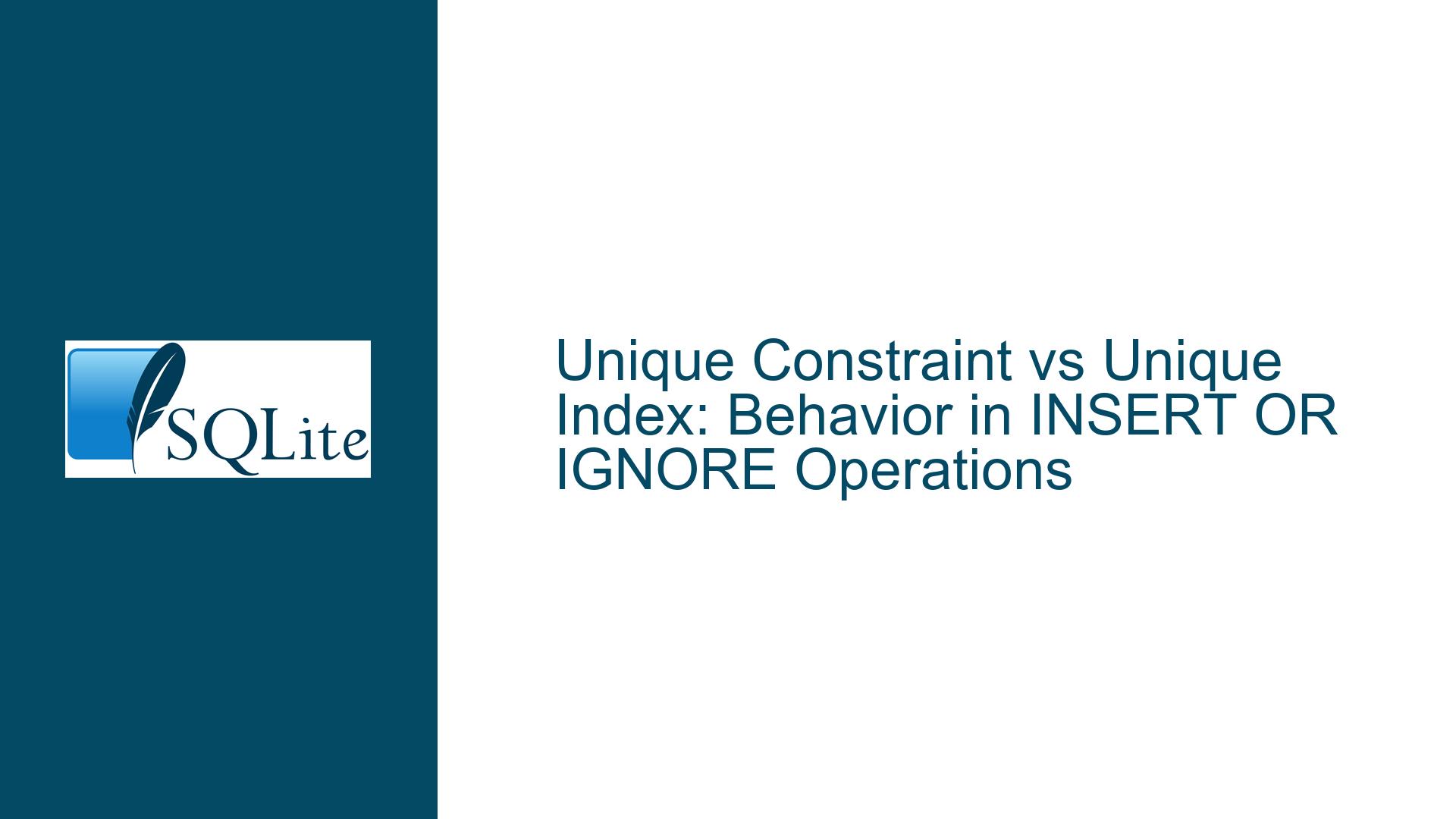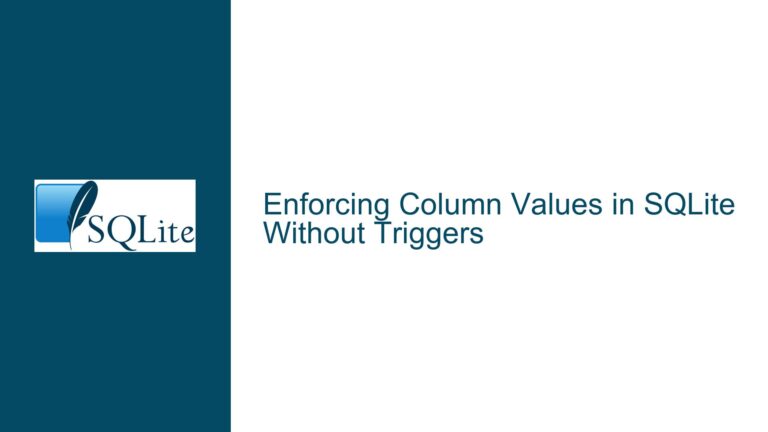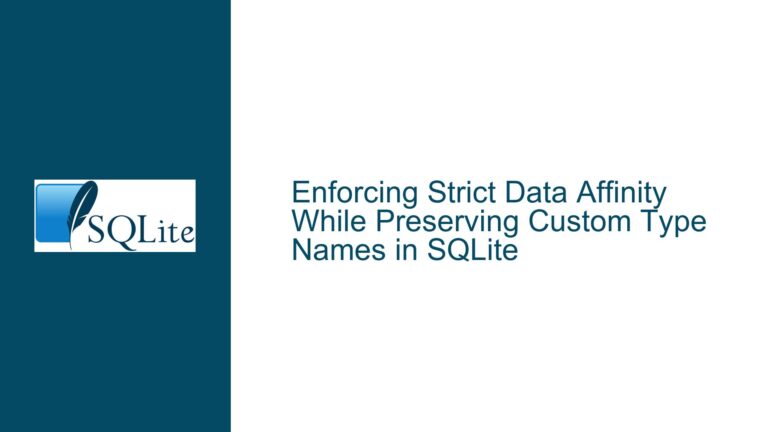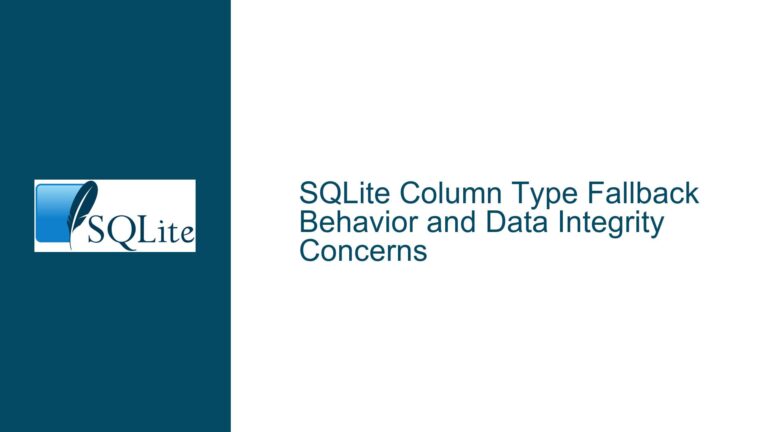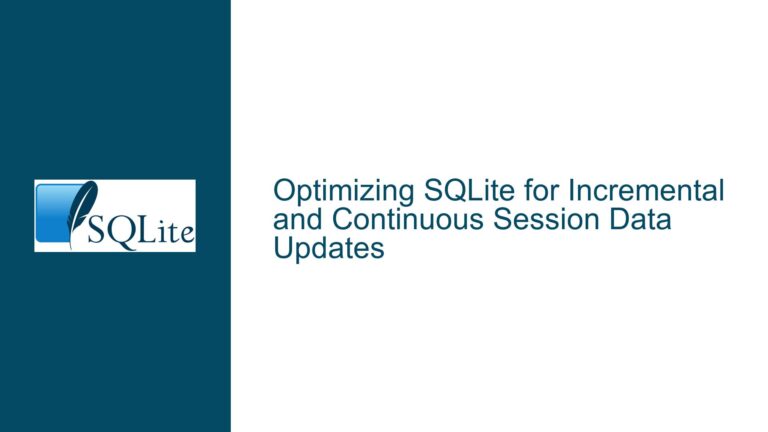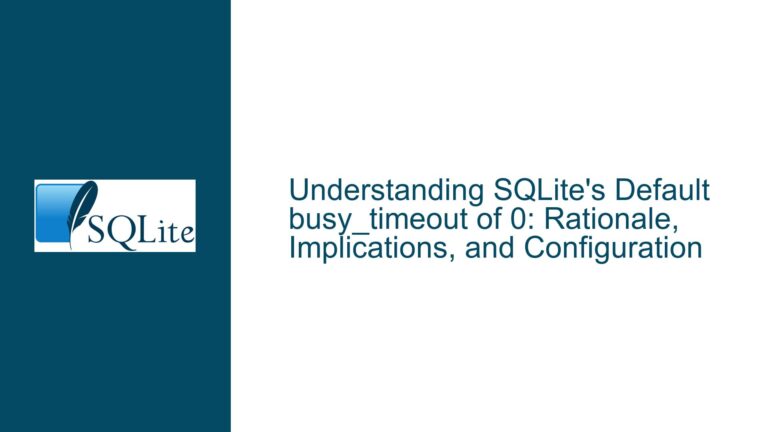Unique Constraint vs Unique Index: Behavior in INSERT OR IGNORE Operations
Understanding UNIQUE Constraints, UNIQUE Indexes, and Their Impact on Conflict Resolution
1. Core Functionality and Behavioral Differences Between UNIQUE Constraints and Indexes
The foundational distinction between a UNIQUE constraint and a UNIQUE index in SQLite lies in their declarative purpose and enforcement mechanics. A UNIQUE constraint is a schema-level rule embedded directly in the table definition. It guarantees that no two rows in the table will have identical values in the specified column(s). When a UNIQUE constraint is defined during table creation, SQLite implicitly creates a corresponding UNIQUE index to enforce this rule. For example:
CREATE TABLE users (
id INTEGER PRIMARY KEY,
email TEXT UNIQUE -- UNIQUE constraint
);
Here, SQLite creates a hidden index on email to validate uniqueness during inserts or updates.
A UNIQUE index, however, is explicitly created by the developer post-table-creation. It serves the same purpose of enforcing uniqueness but exists as a separate database object:
CREATE UNIQUE INDEX idx_unique_email ON users(email);
While both mechanisms enforce uniqueness, their relationship to the table’s schema differs. The UNIQUE constraint is part of the table’s structural definition, whereas a UNIQUE index is an auxiliary object that can be modified independently.
Critical Behavioral Overlap:
For conflict resolution clauses like INSERT OR IGNORE, SQLite treats UNIQUE constraints and UNIQUE indexes identically. Both will trigger a "uniqueness conflict" when a duplicate value is inserted, causing the IGNORE clause to discard the conflicting row. Thus, the presence of either a UNIQUE constraint or a UNIQUE index on a column is sufficient for INSERT OR IGNORE to function as intended.
Key Distinction in Schema Management:
- UNIQUE constraints are tightly coupled with the table’s schema. Removing or altering them requires modifying the table structure (via
ALTER TABLE), which can be cumbersome in SQLite due to its limitedALTER TABLEsupport. - UNIQUE indexes are standalone objects. They can be added or dropped using simple
CREATE INDEXorDROP INDEXstatements, offering greater flexibility during database maintenance.
2. Why Confusion Arises: Misinterpretations of Constraint vs Index Roles
The ambiguity between UNIQUE constraints and indexes stems from overlapping functionality and insufficient documentation clarity. Below are the root causes of misinterpretation:
A. Implicit Index Creation by UNIQUE Constraints
Developers often assume that a UNIQUE constraint and a manually created UNIQUE index are interchangeable. While this is functionally true for enforcing uniqueness, the implicit index created by a UNIQUE constraint is not directly visible in schema introspection tools (e.g., sqlite_master). This can lead to confusion when diagnosing performance issues or verifying index existence.
B. Schema Modification Limitations
SQLite’s ALTER TABLE command cannot directly drop UNIQUE constraints. To remove a UNIQUE constraint, the table must be recreated without the constraint, and existing data must be copied over. In contrast, UNIQUE indexes can be dropped instantly with DROP INDEX. Developers unaware of this difference may mistakenly believe that a UNIQUE index offers no practical advantage over a constraint.
C. Overlooking Conflict Resolution Dependencies
The INSERT OR IGNORE operation relies on the presence of any uniqueness enforcement mechanism—whether a constraint or an index. However, developers might assume that only constraints are recognized by conflict resolution clauses, leading to unnecessary schema modifications.
D. Syntax Ambiguity in Documentation
SQLite documentation refers to constraints and indexes separately but does not always emphasize their functional equivalence in conflict handling. This can cause developers to misattribute failures in INSERT OR IGNORE to the absence of a constraint, even when a UNIQUE index exists.
3. Resolving Ambiguity: Validation, Testing, and Schema Adjustments
Step 1: Verify Existing Uniqueness Enforcement Mechanisms
Before modifying schemas, confirm whether a UNIQUE constraint or index is already in place:
Inspect Table Schema:
PRAGMA table_info(users);Look for
UNIQUEflags in the column definitions.List All Indexes:
PRAGMA index_list(users);Identify indexes marked as
uniqueand their associated columns.
Step 2: Test INSERT OR IGNORE Behavior
Validate whether the existing UNIQUE index suffices for conflict resolution:
Attempt Duplicate Insert:
INSERT OR IGNORE INTO users (email) VALUES ('[email protected]');Execute this statement twice. If the second insertion is ignored, the UNIQUE index is functioning as expected.
Check Row Count:
SELECT COUNT(*) FROM users WHERE email = '[email protected]';The result should be
1, confirming that duplicates were ignored.
Step 3: Modify Schema or Indexes Based on Maintenance Needs
If the UNIQUE index is insufficient (e.g., due to future schema changes):
Option A: Retain the UNIQUE Index
- Pros: Easy to modify (
CREATE/DROP INDEX), no data migration required. - Cons: Less visible in schema documentation compared to constraints.
Option B: Replace Index with a UNIQUE Constraint
- Create a New Table:
CREATE TABLE users_new ( id INTEGER PRIMARY KEY, email TEXT UNIQUE ); - Migrate Data:
INSERT INTO users_new SELECT * FROM users; - Drop Old Table and Rename:
DROP TABLE users; ALTER TABLE users_new RENAME TO users;
Step 4: Address Hyperlink Formatting in Forum Posts
The discussion thread included a secondary question about displaying hyperlinks. While unrelated to SQLite functionality, resolving this requires using Markdown syntax in forum posts:
[Link Text](https://example.com)
Replace Link Text with the desired display text and https://example.com with the target URL.
Final Recommendations:
- Prefer UNIQUE Indexes for Flexibility: Unless the UNIQUE constraint is explicitly required for schema documentation, indexes offer easier maintenance.
- Validate with Real-World Tests: Always test conflict resolution behavior with representative data.
- Document Enforcement Mechanisms: Clearly annotate whether uniqueness is enforced via constraints or indexes to avoid future confusion.
By understanding the functional parity and administrative trade-offs between UNIQUE constraints and indexes, developers can confidently design schemas that balance enforcement rigor with operational flexibility.
